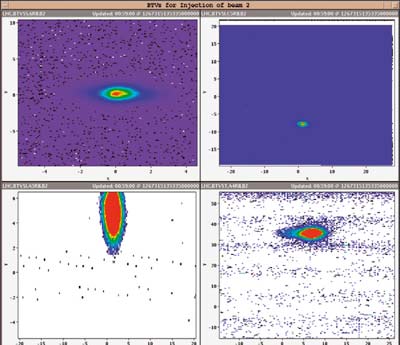
In the early hours of 28 February, beam was circulating again in the LHC at the start of operations that are scheduled to continue for the next 18 to 24 months. The objective is to deliver 1 fb–1 of data to the experiments at 7 TeV in the centre of mass, so providing enough data to make significant advances across a range of physics channels.
This restart followed a break of several weeks during which LHC teams carried out essential work to ensure the correct functioning of the magnets at high current. They verified several thousand channels of the new quench-protection system (nQPS) and measured precisely the resistance of the 10,000 splices connecting the magnets, finding no unacceptably anomalous values.
Once work on the nQPS had been completed, it was the turn of the hardware-commissioning team to test the main dipoles and quadrupoles of the LHC up to a current of 6 kA. This will allow proton collisions at 7 TeV in the centre of mass during the coming run. After completing these tests the hardware-commissioning team handed over to the operations team.
Their initial operations centred on tests without beam to verify the correct functioning of all of the machine systems in unison. Late on 27 February the LHC was ready to receive beam again, and by just after 4.00 a.m., protons had circulated in each direction round the machine. For the operations team this was the beginning of a period of optimization at the injection energy of 450 GeV, investigating parameters associated with beam injection, collimation and the beam-abort systems etc., as well as studies to improve the beam lifetime. The first ramps – without beam – were made on the evening of 9 March to an energy of 1.18 TeV, the highest level that was achieved in 2009. Ramps to 3.5 TeV per beam are scheduled for later in March, with collisions planned for the end of the month.
• For the latest LHC news see, www.cern.ch/bulletin, as well as www.cern.ch and www.twitter.com/cern.





